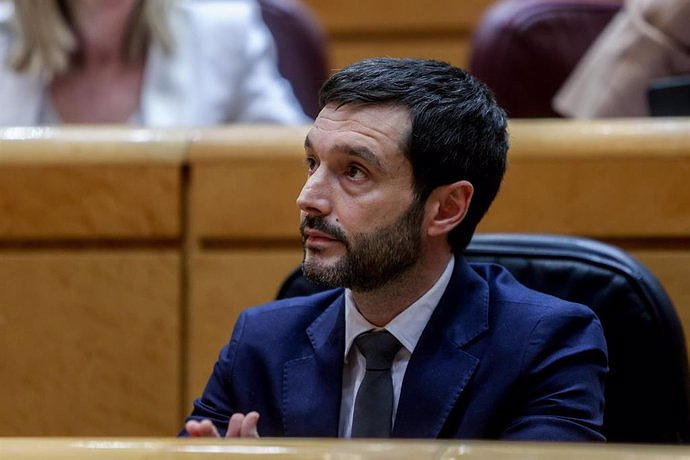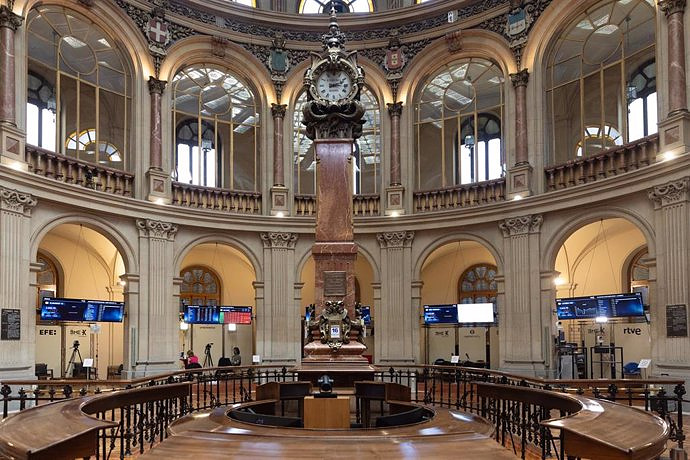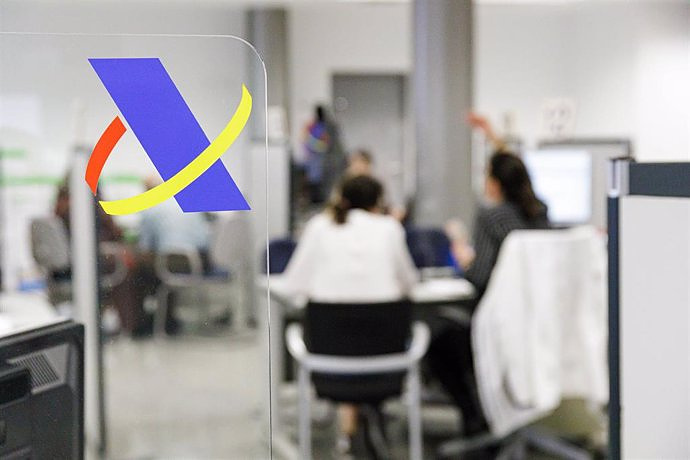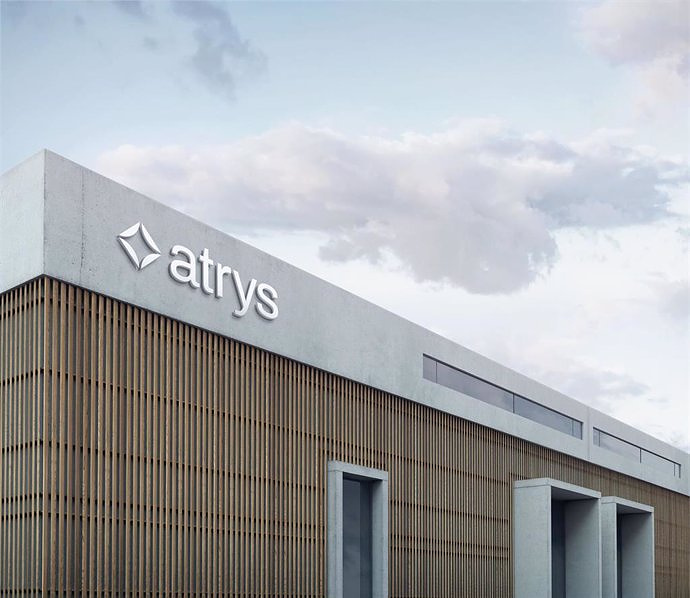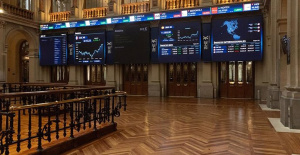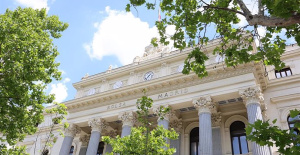It is about the market, cryptocurrencies, artwork and future projections.
Alberto Echegaray: Moneyball began developing in 2012. It's a piece that touches on something that's taboo in art: cash. And it is still taboo, though it's something that is changing today with NFTs.
What Moneyball would like to reveal is the way most, or basically all, fiat monies don't have any backing in the world right now. And how many governments take advantage of issuing these currencies to create inflation, which is essentially a taxation -- a ghost that takes away people's purchasing power.
With this concept, I started to work on Moneyball with dollars. I lived in Washington, DC for about 12 years I did some consulting for the Fed. That's how I came into the Fed, I had been encouraged to tour the facilities of a division where they print bucks.
At that time, they were replacing old dollars with the new dollars which are in circulation now. In one part, I found a massive warehouse with billions of dollars destroyed. That's when I thought, This is amazing . You could not shoot pictures -- there certainly were a lot of security measures. I inquired for the destroyed money, but I was told that the money is state home, it's not our home. And even if it's destroyed, it's still national property.
I needed to write a series of letters, and after a few months, they handed me two million dollars in 100-dollar bills, destroyed. And so I started to create the artwork.
CT: And just how did you come up with the concept of adding Bitcoin for your job?
AE: At the end of 2013, a Venezuelan in San Francisco told me about BTC and gave me some, which I have.
I spoke to a number of individuals in Silicon Valley, and they were telling me it was likely to be part of the future, particularly blockchain. I started purchasing Bitcoin and actually getting into it. I then started a fund and became a crypto missionary.
"It was super interesting. Bitcoin began to grow. And at that moment, I managed to travel to different states for work. I started to discover resistance from each of the financial sectors. It seemed like I was talking about something linked to crime or money laundering. It was terrible."
But in 2016, I was approached by a person who became part of the Argentine government and wanted some help with technologies to stop money laundering and terrorist funding. The FIU had practically nothing to fight against money laundering with Bitcoin and crypto. It was a mess. I had been asked to assist, and it was an intriguing challenge. More advanced systems of analysis, data and data were installed.
But I was not interested in the prosecution part of this offense; I was much more interested in the specialized and crypto part. I was new, but I was encouraged by the Argentine government. They were a very strong group.
CT: Would you wish to do more and see another side behind the curtain?
AE: That was in 2016/2017. But before I joined FATF at the Argentina seat, I had four years of experience working in Paris on regulatory problems. I had started to grow, in parallel, a private note off-market, and it was the very first artificial with all the underlying asset being Bitcoin.
And there, I managed to structure a financial product you could invest from a financial institution account. It was super powerful, until the banks explained that they couldn't accept money since it involved BTC.
I started considering Cryptoball. If I'd gone through fiat money, showing it to be worthless, I said I'm going to attempt it with crypto. I began creating the Cryptoball, however in 2017/2018, it had been hard to find curved displays that would show the price of BTC.
Cryptoball is a world with two flexible displays connected to software in a chip. The processor shows the real-time worth of BTC that's held in a hardware wallet within the piece. It reveals the price in yen, euros and dollars. At the time, I got 250 BTC, and I put them at the Ledger wallet.
"Next to the setup at the Venice Biennale, I placed a million dollars and a million euros. There were a lot of young men and women.
That is when a European collector that I didn't know approached me. He offered to meet me in a restaurant the following day.
He turned out to be a priest who's very supportive of this culture. We sat down and talked about the artwork. I couldn't believe it because the Venice Biennale isn't a place in which you sell.
The Biennale ended, and I took the artwork to his house, a location in Switzerland. It is a very interesting story.
CT: The art and crypto worlds are all getting along very well. What do you think about NFTs? Do you have plans to work with this technology?
AE: I am starting the procedure for tokenizing some functions. I'm thinking about tokenizing the sphere, but I need it to be some thing interesting. Not only a 3D design of art or a sculpture but, for example, a sort of live ticker that shows the price. Something which exists in actuality, that exists in parallel in various dimensions.
I am working on 3D mapping and augmenting reality with a bunch of individuals. I was also encouraged to be an advisor on an NFT platform which was created artists.
I think we're at the beginning of tokenization and also a great deal of interesting things which may spread the artwork. By this, I suggest that before, it was very hard for artists who graduated from art schools to get galleries. That is changing dramatically. Now, art school graduates that have chosen to dedicate themselves to digital or digital artwork are getting job offers, as is happening in the gaming industry, for example.
This is added to all the bulk consumer brands which are getting into the virtual world. It is amazing what is coming.
CT: Seeing the future of private banking, do you believe that banks will utilize crypto or from crypto?
AE: all of the big banks have big crypto research branches. They know that this is a new system within the financial system. It's like when we discuss landline telephones and cell phones -- they are going to end up cannibalizing everything.
However, they're still clinging to their transfer systems and their means of charging commissions and earning money, and they have not attained that this has shifted radically.
There are a few people who try to understand it, but it's very hard."
The same holds for regulators. There aren't enough human resources to ask who knows both worlds. And there is no capacity, brainpower and determination. They believe it's still a very long way away.
CT: What do you think the state of the international monetary system will be like in 2030?
It is a parallel system of governments, which is based on the rate of technology. I think in 2030, there will be a society that is integrated on the one hand, but more discriminatory on another. They will be very strong groups.
What we're seeing with crypto is essentially a revolution of resources or personal currencies like we've never seen before. In the example of crypto, I clearly see personal systems, linked to private space programs, which might or may not be open source. I visit banks in this space, more evolved electronic assets, and also the tokenization of commodities happening in the future.
Traders do not need to lose control of all this. That's kind of the projection I visit. I believe there will be a brand new system that's neither capitalist nor socialist.

 Exploring Cardano: Inner Workings and Advantages of this Cryptocurrency
Exploring Cardano: Inner Workings and Advantages of this Cryptocurrency Seville.- Economy.- Innova.- STSA inaugurates its new painting and sealing hangar in San Pablo, for 18 million
Seville.- Economy.- Innova.- STSA inaugurates its new painting and sealing hangar in San Pablo, for 18 million Innova.- More than 300 volunteers join the Andalucía Compromiso Digital network in one month to facilitate access to ICT
Innova.- More than 300 volunteers join the Andalucía Compromiso Digital network in one month to facilitate access to ICT Innova.-AMP.- Ayesa acquires 51% of Sadiel, which will create new technological engineering products and expand markets
Innova.-AMP.- Ayesa acquires 51% of Sadiel, which will create new technological engineering products and expand markets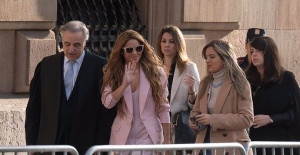 Prosecutor's Office requests the filing of a new case against Shakira for alleged tax crime
Prosecutor's Office requests the filing of a new case against Shakira for alleged tax crime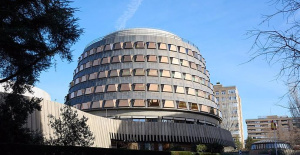 The Constitutional Court endorses the law that criminalizes harassment in abortion clinics
The Constitutional Court endorses the law that criminalizes harassment in abortion clinics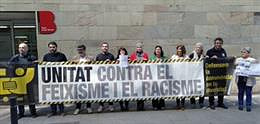 PSC and Junts join the commitment not to agree with Vox or Aliança Catalana
PSC and Junts join the commitment not to agree with Vox or Aliança Catalana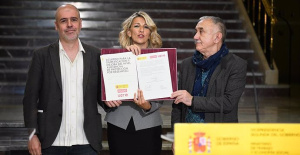 This is the subsidy reform: higher amounts and beneficiaries and compatibility of unemployment with a salary
This is the subsidy reform: higher amounts and beneficiaries and compatibility of unemployment with a salary How Blockchain in being used to shape the future
How Blockchain in being used to shape the future Not just BTC and ETH: Here Are Some More Interesting Coins Worth Focusing on
Not just BTC and ETH: Here Are Some More Interesting Coins Worth Focusing on They develop devices for the precise diagnosis of cancer patients
They develop devices for the precise diagnosis of cancer patients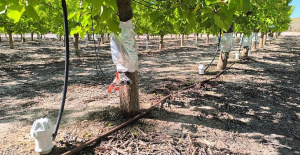 UMH researchers are working on a high-quality apricot crop that requires less irrigation water
UMH researchers are working on a high-quality apricot crop that requires less irrigation water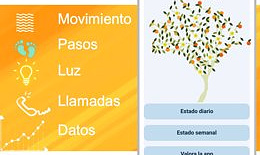 The UPV develops an application to improve the quality of life of patients with glioblastoma
The UPV develops an application to improve the quality of life of patients with glioblastoma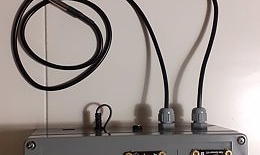 A sensor system obtains the fingerprint of essential oils and detects if they have been adulterated
A sensor system obtains the fingerprint of essential oils and detects if they have been adulterated A million people demonstrate in France against Macron's pension reform
A million people demonstrate in France against Macron's pension reform Russia launches several missiles against "critical infrastructure" in the city of Zaporizhia
Russia launches several missiles against "critical infrastructure" in the city of Zaporizhia A "procession" remembers the dead of the Calabria shipwreck as bodies continue to wash up on the shore
A "procession" remembers the dead of the Calabria shipwreck as bodies continue to wash up on the shore Prison sentences handed down for three prominent Hong Kong pro-democracy activists
Prison sentences handed down for three prominent Hong Kong pro-democracy activists ETH continues to leave trading platforms, Ethereum balance on exchanges lowest in 3 years
ETH continues to leave trading platforms, Ethereum balance on exchanges lowest in 3 years Investors invest $450 million in Consensys, Ethereum incubator now valued at $7 billion
Investors invest $450 million in Consensys, Ethereum incubator now valued at $7 billion Alchemy Integrates Ethereum L2 Product Starknet to Enhance Web3 Scalability at a Price 100x Lower Than L1 Fees
Alchemy Integrates Ethereum L2 Product Starknet to Enhance Web3 Scalability at a Price 100x Lower Than L1 Fees Mining Report: Bitcoin's Electricity Consumption Declines by 25% in Q1 2022
Mining Report: Bitcoin's Electricity Consumption Declines by 25% in Q1 2022 Oil-to-Bitcoin Mining Firm Crusoe Energy Systems Raised $505 Million
Oil-to-Bitcoin Mining Firm Crusoe Energy Systems Raised $505 Million Microbt reveals the latest Bitcoin mining rigs -- Machines produce up to 126 TH/s with custom 5nm chip design
Microbt reveals the latest Bitcoin mining rigs -- Machines produce up to 126 TH/s with custom 5nm chip design Bitcoin's Mining Difficulty Hits a Lifetime High, With More Than 90% of BTC Supply Issued
Bitcoin's Mining Difficulty Hits a Lifetime High, With More Than 90% of BTC Supply Issued The Biggest Movers are Near, EOS, and RUNE during Friday's Selloff
The Biggest Movers are Near, EOS, and RUNE during Friday's Selloff Global Markets Spooked by a Hawkish Fed and Covid, Stocks and Crypto Gain After Musk Buys Twitter
Global Markets Spooked by a Hawkish Fed and Covid, Stocks and Crypto Gain After Musk Buys Twitter Bitso to offset carbon emissions from the Trading Platform's ERC20, ETH, and BTC Transactions
Bitso to offset carbon emissions from the Trading Platform's ERC20, ETH, and BTC Transactions Draftkings Announces 2022 College Hoops NFT Selection for March Madness
Draftkings Announces 2022 College Hoops NFT Selection for March Madness



